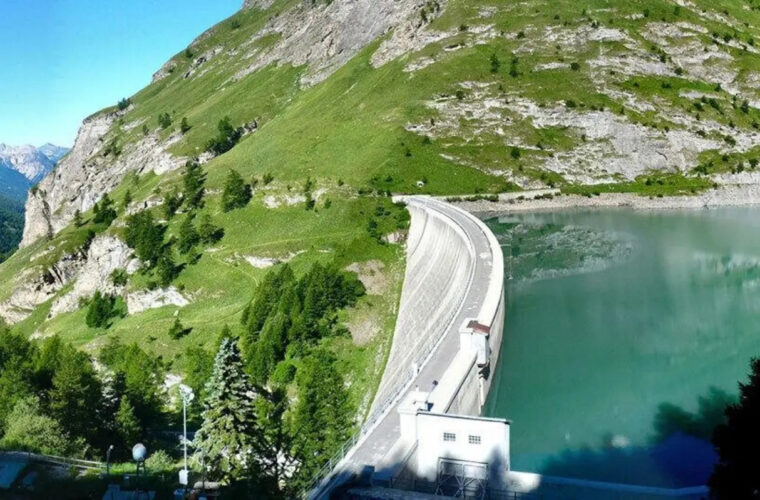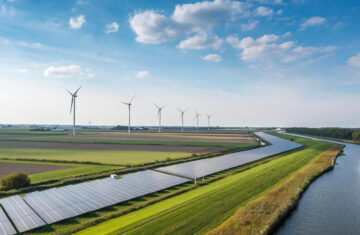A Comprehensive Overview
Hydropower is one of the most significant renewable energy sources in Italy, playing a crucial role in the country’s energy mix and environmental strategy. In this article, we will explore the state of hydropower energy in Italy, its historical development, current statistics, and future prospects.
Historical Context of Hydropower in Italy
Early Development
Hydropower in Italy has roots that trace back to ancient times, where watermills were used for agricultural purposes. The first modern hydropower plants began to emerge in the late 19th century, with the construction of plants along the major rivers, such as the Po and the Adige. The Italian government recognized the potential of hydropower early on, providing financial incentives for development.
Post-War Expansion

Post-World War II, Italy saw a significant expansion in hydropower infrastructure. The 1950s and 1960s were particularly notable, as the country sought to rebuild its economy and energy infrastructure. Major projects, such as the construction of the Lago di Fie’ and the Serchio River plants, marked this period.
Current State of Hydropower Energy in Italy
Hydropower Capacity and Production
As of 2022, hydropower accounts for approximately 15% of Italy’s total electricity generation, making it one of the largest sources of renewable energy in the country. According to the Gestore dei Servizi Energetici (GSE), Italy has a total hydropower capacity of around 21,000 MW, with approximately 5,400 plants operating across the country.
Breakdown of Hydropower Production
- Run-of-River Plants: These plants utilize the natural flow of rivers and account for about 70% of Italy’s hydropower production.
- Reservoir Plants: These facilities, which store water in reservoirs, contribute roughly 30% to the total hydropower generation.
Regional Overview

The production of hydropower varies significantly across different regions in Italy. The northern regions, particularly the Aosta Valley, Trentino-Alto Adige, and Piedmont, are the most productive areas due to their mountainous terrain and abundant water resources.
- Piedmont: Home to the largest concentration of hydropower plants, producing about 30% of Italy’s total hydropower.
- Trentino-Alto Adige: Known for its high-altitude lakes, this region contributes significantly to the national output.
- Lazio and Campania: These regions are also emerging as important players in the hydropower sector.
Economic Impact of Hydropower
Job Creation and Local Economies
Hydropower plants not only provide renewable energy but also create jobs and stimulate local economies. According to a report by the Italian Hydropower Association (ANEV), the hydropower sector supports over 50,000 jobs directly and indirectly. This includes roles in plant operation, maintenance, and ancillary services.
Investment in Infrastructure
Investment in hydropower infrastructure has been a priority for the Italian government, particularly in light of the European Union’s Green Deal. The Italian Ministry of Economic Development has allocated significant funds to modernize existing plants and develop new projects.
Environmental Considerations
Renewable Energy Transition
Hydropower is a cornerstone of Italy’s strategy to transition to renewable energy. The country aims to achieve a 55% reduction in greenhouse gas emissions by 2030, in line with EU targets. Hydropower contributes to this goal by providing a clean, renewable source of energy.
Ecological Impact
While hydropower is generally considered a clean energy source, it is not without its environmental challenges. The construction of dams and reservoirs can disrupt local ecosystems and fish populations. The Italian government and various NGOs are working to mitigate these impacts through environmental assessments and sustainable practices.
Innovative Solutions

Recent advancements in technology have led to more sustainable hydropower solutions, such as small-scale plants and run-of-river systems that minimize ecological disruption. These innovations are crucial for balancing energy production with environmental preservation.
Future Prospects of Hydropower in Italy
Potential for Growth
Despite being a leader in hydropower, Italy still has untapped potential. According to the International Renewable Energy Agency (IRENA), Italy could increase its hydropower capacity by 20% over the next decade through modernization and new projects.
Integration with Other Renewable Sources
The future of hydropower in Italy also lies in its integration with other renewable energy sources. For example, combining hydropower with solar and wind energy can create a more resilient and flexible energy system. This synergy allows for better management of energy supply and demand, especially during peak usage times.
Policy and Regulatory Framework
The Italian government has set ambitious targets for renewable energy, with hydropower playing a central role. The National Energy and Climate Plan (NECP) outlines specific goals for increasing renewable energy capacity, including investments in hydropower technologies.
Conclusion
Hydropower energy in Italy is a vital component of the country’s renewable energy landscape. With a rich history, significant current capacity, and a promising future, hydropower not only supports economic growth and job creation but also plays a crucial role in Italy’s commitment to sustainability and environmental protection.
As the country continues to innovate and invest in its hydropower infrastructure, it will remain a leader in renewable energy, contributing to a cleaner and more sustainable world.


